Welcome back to another edition of your favorite place for all-ages comics, From Friendly Ghosts To Gamma Rays! This week we have something special for ya’ll out there. My pal Bryan Patrick Stoyle is serving this week as a guest writer for us with his review of the Broadway musical epic known as Spider-Man: Turn Off the Dark! Let’s see how it rated; take it away, Bryan!
On Stage: Spider-Man: Turn Off the Dark
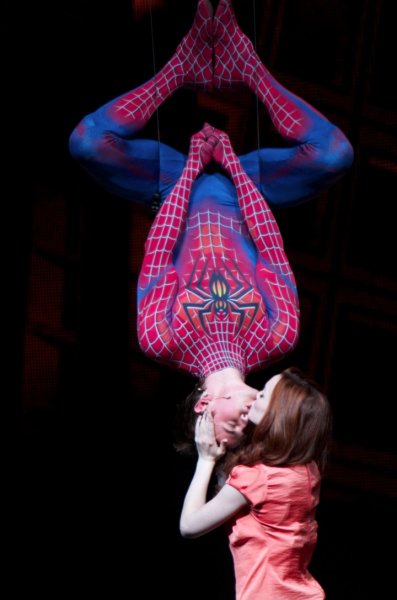 This weekend, the geeks come out to play in New York City as denizens from all over the planet attend New York Comic Con. While the convention itself will be packed with programming and costumes and everything we know and love about comic book conventions, New York City has one added attraction which is bound to get some more nerd love: Spider-Man: Turn Off the Dark on Broadway.
This weekend, the geeks come out to play in New York City as denizens from all over the planet attend New York Comic Con. While the convention itself will be packed with programming and costumes and everything we know and love about comic book conventions, New York City has one added attraction which is bound to get some more nerd love: Spider-Man: Turn Off the Dark on Broadway.
But of course, convention goers may have questions and doubts about the production. I, like many fans, have been following this musical in the press ever since the show’s inception, and have seen and heard all about the myriad of problems that plagued the production.
I decided I needed to be my own judge. This past Tuesday, while visiting the Big Apple, a friend and I went to see TOTD. I have to say, I greatly enjoyed it. Should you go and see it? Yes, you should. But know what you’re getting into.
Many reviews have called Turn Off the Dark a bad or mediocre musical. What the reviews seem to miss is that TOTD is scarcely trying to be a traditional musical. This is not your typical musical. This is not the comic book. This is not the Sam Raimi film franchise. This is Cirque du Spidey. Turn Off the Dark is a live action celebration of the comic book art form and the broad strokes of the Spider-Man character, delivered in the modern musical format. This show is all about the over the top, live spectacle. Video screens, trap doors, treadmills, aerial stunts, puppetry, and other devices that are less traditional in modern Western theatre.
Anyone who has seen Julie Taymor’s previous work should not be at all surprised by the non-traditional creative and design choices. A brief look through the bios of the show’s design team reveals a number of team members who have worked on popular Cirque du Soleil productions, including ‘KA’ and ‘O.’ Music and lyrics were contributed by Bono and The Edge (of U2 fame), and while there are a number of songs within the show that don’t necessarily sound like they belong on a U2 album, one can hardly be surprised when the influence of the band’s musical style bleeds through. In short, the very notion that TOTD would be anything close to a traditional Broadway musical is downright foolish.
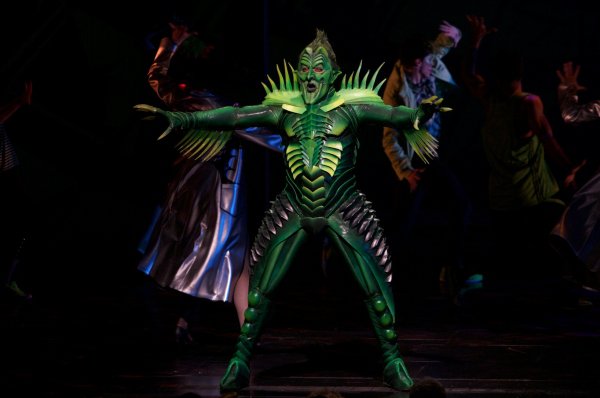 What TOTD excels most at is having fun. The show is a wild ride, from start to finish. Which, strangely, fits perfectly with the fun nature of the Spider-Man character. This style of rock musical would not work with the X-Men, Superman, Batman, or Captain America. But with the essence of Spider-Man, the whole thing just kind of works. The show also has a wonderful sense of humor about itself, with in-jokes and metahumor mixed into the show. During the number “A Freak Like Me Needs Company,” the Green Goblin (Patrick Page) has the line: “I’m a sixty-five million dollar circus tragedy…”, following which Page lovingly ad-libbed, “more like seventy-five.” Quite possibly one of the best Spider-Man in-jokes since Tobey Maguire’s “My back!” in Spider-Man 2 (you know what I’m talking about). Additionally, music by U2 is used twice in the show. The first instance, a brief snippet of “Beautiful Day,” is used quite brilliantly as “on hold” music during a phone call.
What TOTD excels most at is having fun. The show is a wild ride, from start to finish. Which, strangely, fits perfectly with the fun nature of the Spider-Man character. This style of rock musical would not work with the X-Men, Superman, Batman, or Captain America. But with the essence of Spider-Man, the whole thing just kind of works. The show also has a wonderful sense of humor about itself, with in-jokes and metahumor mixed into the show. During the number “A Freak Like Me Needs Company,” the Green Goblin (Patrick Page) has the line: “I’m a sixty-five million dollar circus tragedy…”, following which Page lovingly ad-libbed, “more like seventy-five.” Quite possibly one of the best Spider-Man in-jokes since Tobey Maguire’s “My back!” in Spider-Man 2 (you know what I’m talking about). Additionally, music by U2 is used twice in the show. The first instance, a brief snippet of “Beautiful Day,” is used quite brilliantly as “on hold” music during a phone call.
Be sure to check out the video screens as the show goes to intermission. In true comic book form, the phrase “TO BE CONTINUED” is displayed (in, for that added little bit of nerd cred, the Back to the Future font).
It’s important to keep in mind that the show is an adaptation of the Spider-Man comics, and not the comics themselves. A generous amount of liberty is taken with the comic book content. In order to tell the story (which, keeping in mind was re-worked after Julie Taymor left the production and Philip Wm. MicKinley took over), many elements were pared down. Just remember, it’s about the broad strokes, not the minutiae.
It’s clear that the Sam Raimi films were a strong influence on the show. From costume choices to the writing of Mary Jane (played beautifully by Jennifer Damiano) to other plot elements, the influences are strong.
 The first act of the show mostly glosses over the origin story. Peter Parker (Reeve Carney) is introduced as the nerdy scientific prodigy we know well, being picked on by Flash Thompson (Matt Caplan) and his classmates in high school. We are introduced to Uncle Ben and Aunt May (Ken Marks and Isabel Keating, respectively), as well as Mary Jane and her abusive father (Timothy Warmen). One science class field trip to the labs of Norman Osborn (Patrick Page), and a puppet spider scales down and bites Peter, imbuing him with his new powers. There is a fun bit of exploration of Peter’s new-found powers in the musical number “Bouncing Off the Walls,” in which we first see him jumping onto stylized walls and ceilings and fending off his high school bullies in avant garde fight sequences, all utilizing the show’s aerial rigging system. After the number, Peter briefly explains in a throwaway line that he researched and found that he had the proportional speed and strength of a spider.
The first act of the show mostly glosses over the origin story. Peter Parker (Reeve Carney) is introduced as the nerdy scientific prodigy we know well, being picked on by Flash Thompson (Matt Caplan) and his classmates in high school. We are introduced to Uncle Ben and Aunt May (Ken Marks and Isabel Keating, respectively), as well as Mary Jane and her abusive father (Timothy Warmen). One science class field trip to the labs of Norman Osborn (Patrick Page), and a puppet spider scales down and bites Peter, imbuing him with his new powers. There is a fun bit of exploration of Peter’s new-found powers in the musical number “Bouncing Off the Walls,” in which we first see him jumping onto stylized walls and ceilings and fending off his high school bullies in avant garde fight sequences, all utilizing the show’s aerial rigging system. After the number, Peter briefly explains in a throwaway line that he researched and found that he had the proportional speed and strength of a spider.
There is, however, no explanation of the web shooting ability’s origin. The ability just appears when Spider-Man first dons the costume (presumably to keep the first moment Spider-Man flies through the audience a very special moment in the show). While one can infer that it’s a natural power (a la the films) and not the web shooter devices of the comics, it is not clearly established one way or another. One nice touch used in the show is the aerial team of Spider-Man stunt doubles (also known as the entire male ensemble) use of the cables that lift them through the air as the webs that Spidey swings from. It’s a nice touch of using a technical necessity to the advantage of the character.
The famous mantra “with great power comes great responsibility” is mentioned once by Peter, but is not instilled in him by Uncle Ben, as it is in the comics and in other adaptations. Uncle Ben and Aunt May tend to favor the saying “rise above it” in this work, of course tying in to one of the main songs of the show, “Rise Above.” While Uncle Ben is shot shortly after Peter’s profitable wrestling match against Bonesaw McGraw (played by, of all things, a large inflatable character balloon), the circumstances and the killer are never revealed. Peter simply grieves and chooses to use his power for good from then on.
Norman Osborn seems to be a hybrid of Norman Osborn and Otto Octavius in this show. In the first act he sports a long lab coat and small round sunglasses, which evokes Octavius more than it does Osborn. Whether that was a deliberate choice or not on the part of costume designer Eiko Ishiko is unknown. Given the fact that Osborn loses his wife Emily (Laura Beth Wells) in the experiment that creates his Green Goblin mutation, there is an even stronger parallel to Doc Ock. There is no Harry Osborn. No mention of him at all.
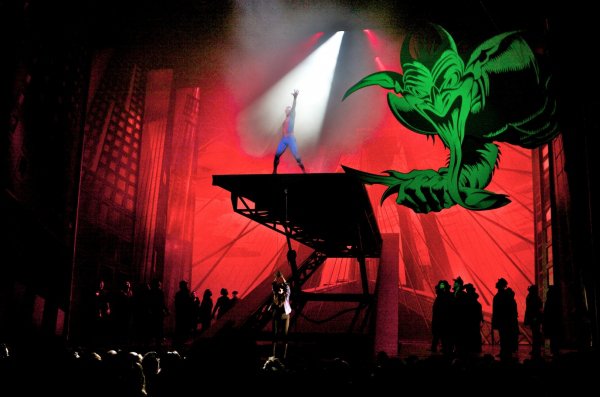 Additionally, the Green Goblin is not exactly the same supervillain comic character fans are familiar with. Instead of being a normal person with enhanced physical abilities wearing a suit, the Green Goblin of TOTD is actually an induced mutation in both appearance as well as abilities. He is not wearing a green suit; he is green. However, Mr. Page does such a superb job playing the supervillain, there is not much time spent caring. Patrick Page is the funniest Green Goblin you’ll ever see, while still striking the right balance of over-the-top theatricality with the crazed lethality of the Goblin. You can tell that he is having the time of his life in the role. After his transformation, the Green Goblin goes about creating more villains like himself, in the form of the Sinister Six (Carnage, Swarm, Electro, Kraven, Lizard, and new creation Swiss Miss). This of course means that the established villains’ origins are ignored in favor of being induced mutations onto captured Oscorp employees. However, before one has too much time to complain, Spider-Man makes quick work taking these new threats out one by one. Given the speed at which they are introduced and defeated, I’d have thought I was watching a live showing of the Power Rangers if not for the spiders on the spandex jumpsuits (though I suppose fans of the Toei Japanese Spider-Man television show will get a kick out of this).
Additionally, the Green Goblin is not exactly the same supervillain comic character fans are familiar with. Instead of being a normal person with enhanced physical abilities wearing a suit, the Green Goblin of TOTD is actually an induced mutation in both appearance as well as abilities. He is not wearing a green suit; he is green. However, Mr. Page does such a superb job playing the supervillain, there is not much time spent caring. Patrick Page is the funniest Green Goblin you’ll ever see, while still striking the right balance of over-the-top theatricality with the crazed lethality of the Goblin. You can tell that he is having the time of his life in the role. After his transformation, the Green Goblin goes about creating more villains like himself, in the form of the Sinister Six (Carnage, Swarm, Electro, Kraven, Lizard, and new creation Swiss Miss). This of course means that the established villains’ origins are ignored in favor of being induced mutations onto captured Oscorp employees. However, before one has too much time to complain, Spider-Man makes quick work taking these new threats out one by one. Given the speed at which they are introduced and defeated, I’d have thought I was watching a live showing of the Power Rangers if not for the spiders on the spandex jumpsuits (though I suppose fans of the Toei Japanese Spider-Man television show will get a kick out of this).
While the show is action packed, it is not particularly violent. All of the fighting is stylized in some form or another. Every villain character is dehumanized by the use of elaborate puppetry and costuming (even non-mutated villains like a set of bank robbers). The only time we see person-fighting-person is early in Act 1 between Peter and the school bullies, and even then the fighting is so stylized that no parent should worry about the show being too violent for children.
I found the Lizard’s costume to be underwhelming. While it was wonderful to see the number of villains they had in the show, and it’s understandable that the cast had to get in and out of these costumes quickly, the concept of the costume just came off as silly: a blow-up lizard that protrudes out of the scientist’s front and rear torso, almost as if the lizard is a separate entity from Doctor Kurt Connors. I was also left wondering just how much material was removed from the show in regard to the character of Arachne (T.V. Carpio). The Arachne character does little more than serve as moral support and guidance to Spider-Man in the show, which to the reworked story, serves its purpose. However, I would love to see just how much more the Arachne character did in Taymor’s original version of the story.
After a number of twists and turns, the show culminates in a final confrontation between Spidey and the Green Goblin, complete with Spidey and the Goblin fighting in midair over the audience. The flights really do make for an incredible experience. Why wait until next summer’s film reboot to see Spider-Man in 3-D when you can see Spider-Man IN PERSON FLYING AND LANDING NEXT TO YOUR SEAT!?
To address the safety issues, there was nothing that happened during the show that gave me any reason to worry. Sure, there are a lot of aerial stunts and a lot that could go wrong. However, it was shown that these issues were addressed when the production halted previews for several weeks earlier this year. I must say that I find it truly inspiring that Christopher W. Tierney, the actor who became infamous for being seriously injured on the show after falling ten meters during a preview performance, is back on the show performing aerial stunts again. If that is not a true telling of getting back on the horse, nothing is. Mr. Tierney, my hat goes off to you.
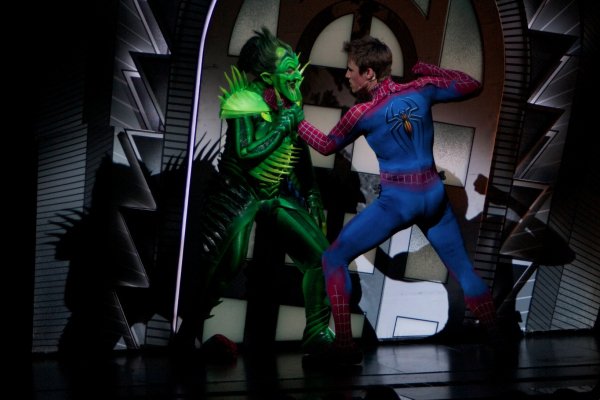 In an odd way, the negative reviews, press, and media circus that has preceded this show have been the best thing that could possibly happen to it. TOTD was already getting a lot more press (due in large part to its source material, as well as the high profile talent leading the ship) before problems started occurring. Those problems are nothing new to big Broadway shows. Many other productions have had a long and winding road to becoming the famous musicals we know today. Twists and turns and bumps in the process are nothing new to Broadway. TOTD just had the misfortune of being a high profile project being constructed in the age of the internet. However, the press kept the show’s existence in the minds of the world. And it worked, because the show is selling, and it is selling well. My friend and I went to a Tuesday night performance and the show was nearly sold out. And let’s not forget the added money earned from merchandising. The stores within the Foxwoods Theatre are armed with enough merchandise to make George Lucas blush (I walked away with a mug for my delightfully nerdy mug collection).
In an odd way, the negative reviews, press, and media circus that has preceded this show have been the best thing that could possibly happen to it. TOTD was already getting a lot more press (due in large part to its source material, as well as the high profile talent leading the ship) before problems started occurring. Those problems are nothing new to big Broadway shows. Many other productions have had a long and winding road to becoming the famous musicals we know today. Twists and turns and bumps in the process are nothing new to Broadway. TOTD just had the misfortune of being a high profile project being constructed in the age of the internet. However, the press kept the show’s existence in the minds of the world. And it worked, because the show is selling, and it is selling well. My friend and I went to a Tuesday night performance and the show was nearly sold out. And let’s not forget the added money earned from merchandising. The stores within the Foxwoods Theatre are armed with enough merchandise to make George Lucas blush (I walked away with a mug for my delightfully nerdy mug collection).
A big question many have been wondering is, how could a production that cost over $70 million to produce recoup the money? The answer may surprise you: they don’t have to. A little known fact about the show is that part of the aerial rigging system, which allows two actors to fly in relation to one another, has been patented. The new rig is being used in Hollywood and other entertainment productions. The production is free to Rise Above the profit margin (song pun fully intended).
If you enjoy Spider-Man and can get past the adaptation not following the dogma of the comic books, then I strongly urge that you take the time to see Turn Off the Dark. If you’re not used to paying for Broadway theatre, it’s understandable that the ticket prices may seem expensive. Trust me, though, when I tell you that between the production value and the hard work of the cast and crew, you will see that $70 million all on the stage. Search online for discount codes, as there are several available through November 2011 to help save a little money. Go in with an open mind. If you can swing it, see this show with the original opening cast. Some contracts are ending before the end of the year, so there may be some cast changes coming soon. Reeve Carney shows off why he is the perfect choice to play the musical Peter Parker during the “Rise Above” and “Boy Falls from the Sky” numbers. But don’t give in to the reputation that precedes this production. You will be preventing yourself from seeing one of the most fun adaptations of Spider-Man you will ever see.
———————————————————————————
Awesome, thanks Bryan for the coverage! What about you, readers: have you seen the show or have any thoughts on it? Let us know! Until next week when we see you again!
Photos pulled from Spider-Man: Turn Off the Dark FaceBook page, photos by Jacob Cohl.
Bryan Patrick Stoyle
Drew McCabe
drew@comicattack.net

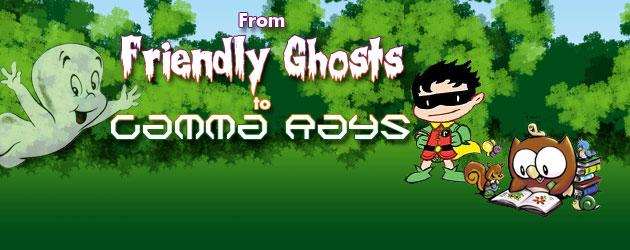
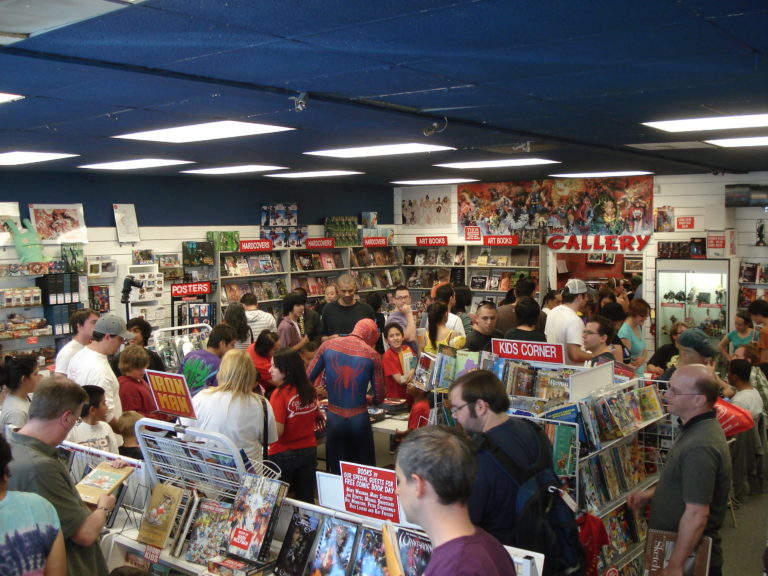


Thank you Drew and the ComicAttack staff for hosting my review! It was a pleasure writing it.
Nice seeing another viewpoint about this musical. Nice one Bryan!